Raspberry (Rubus idaeus) is the most common berry crop. It is grown mainly in the middle zone, in the Urals, Altai, some areas of Siberia, and the Far East. The northern border of growth reaches the Murmansk region. In the southern direction, industrial plantings of raspberries are found all the way to the Voronezh region.
|
To grow such raspberries, you have to try hard |
Biological features of culture
Raspberry is a subshrub, 1-3 m high. The underground part is a perennial rhizome and lateral roots that produce young shoots. The rhizome ages quickly. The maximum lifespan is 7-10 years, however, due to its creeping, 3-10 young nodes are formed annually.
Therefore, if you do not annually cut out all the growth, but leave a few shoots, then the life of the plot can increase to 20-25 years, but it will be “drifting” - 1.5-2 m to the sides from the main planting.
The rhizomes lie shallow: 15-20 cm, so overgrown weeds greatly inhibit it, depriving it of moisture and nutrients.
The above-ground part consists of biennial and annual shoots. Annual shoots are always green; biennial shoots, depending on the variety, can be green, red-brown or purple. All shoots are covered with a waxy coating and have small soft thorns, but now thornless varieties have also been bred. Only branches of the second year bear fruit (with the exception of remontant varieties); after fruiting they die. Their place is taken by shoots that grew over the summer, which will bear fruit the next year.
|
Raspberries bloom later than other berries, so they are practically not affected by early summer frosts. |
The first buds appear at the end of May, mass flowering occurs in mid-June. The crop is self-fertile, but when growing several varieties, the yield increases by 5-10%.
Fruiting begins at the end of June and lasts 20-45 days. Fruiting times vary greatly and depend on the variety and climatic conditions. The fruit is a drupe (raspberry) of red, burgundy, yellow or, rarely, black. Technical ripeness occurs when the berry acquires a characteristic color for the variety, but is not very easily separated from the fruit. Biological ripeness - the berry is easily separated from the fruit. For transportation, berries are collected during the period of technical ripeness.
Requirements for growing conditions
Light
Raspberries grow best in light areas, although they can tolerate partial shade without problems. In dense shade under trees, the crop can also grow and bear fruit, but the yield will be extremely low. In the shade, the summer shoots become very elongated, shading the fruit-bearing ones, the growth period is prolonged, they do not have time to ripen in the cold weather and freeze out in the winter.
Humidity
Raspberries do not tolerate stagnation of water. Groundwater should be no higher than 1.5 m. The crop also does not tolerate drought; it requires regular, abundant watering. If there is a lack of moisture in the summer, the subshrub sheds its ovaries, and the rest take a very long time to fill, and their content of vitamins and sugars decreases.
Temperature
Most varieties are quite winter-hardy. The main thing in a culture is its rhizome. Under the snow, it can withstand thirty-degree frosts. The stems are less frost-resistant. Raspberry growth stops at +8°C. At a temperature of 6°C, the stems become brittle and very brittle. In winter, fully ripened branches can withstand temperatures down to -10°C; at lower temperatures, the tops freeze slightly.
|
In severe winters or in winters with frequent thaws, the above-ground part may freeze completely, but if the rhizome is preserved, it will produce new shoots. |
During the growing season, the crop is undemanding to heat. The harvest ripens even in the coolest summer.
The soil
The culture is suitable for moist, but without stagnant groundwater, soils rich in humus. Heavy clay, rocky and sandy soils are unsuitable.
Snow cover
For raspberries, it is very desirable that snow cover forms as early as possible. The bark in November is too sensitive to cold. It is in November, without snow, but with temperatures of -7°C and below, that most shoots freeze out.
In February (in the south), March (in the middle zone), the bark suffers from the burning rays of the sun, bursts and begins to peel off. Therefore, in regions with cold winters, the semi-shrub is bent so that the branches are completely under the snow. During a warm winter with frequent thaws and little snow cover, the semi-shrub dies out.
|
Snow cover on raspberries should be maintained for as long as possible. |
Remontant raspberry
For the first time, remontant varieties were bred in America. They have a slightly different development cycle: annual shoots produce a harvest in the same year, it is small - only what managed to ripen before the onset of frost. In winter, the top of such a shoot freezes and the next year it bears fruit like an ordinary raspberry. Caring for remontant raspberries basically the same as for a regular one, The only difference is in the cutting.
In our country, Michurin was the first to develop such a variety, but later work in this direction was stopped on the grounds that the harvest on annual shoots is too small and does not have time to ripen before the cold weather, and the next year only 50% of the flower buds are preserved, and the harvest does not pay off .The work got off the ground when it was noticed that shoots frozen to the ground in winter give rise to a new shoot in the spring, on which a full-fledged harvest is formed, although somewhat later than on conventional varieties.
|
Currently, the northern border for growing remontant varieties is the Moscow region. Further north they do not have time to produce a full harvest. |
Remontant raspberries have a one-year development cycle. In spring, a shoot similar to young shoots grows from the rhizome. It blooms in July and produces a full harvest by the end of August-beginning of September, after which it dries out and dies.
Late fruiting has one significant advantage: the berries are not damaged by pests. When remontant raspberries bloom and bear fruit, there are no more pests.
From remontants you can get two harvests per season. To do this, annual shoots are not cut off at the root, but are grown in the usual way. As a result, in the fall they produce a small harvest at the very tops. The next year the top dries out, and the remaining stem bears fruit like a regular raspberry.
But in this case, the subshrub produces a lot of root shoots, the raspberry bush thickens and the overall yield decreases.
The method of obtaining two harvests using remontants is suitable only for the southern regions (starting from the south of the Moscow region). In the north, the late autumn harvest does not have time to ripen.
Comparison of regular and remontant raspberries
| Index | Regular varieties | Remontant varieties |
| Spreading | Up to the Kola Peninsula | Moscow region |
| Escapes | Annuals - green and biennials - fruiting | Usually annual, but can grow the following year |
| Fruiting | Only on two-year-old shoots | On annual shoots. If you leave them until next year, they will produce again. |
| Fruiting dates | July-early August | Aug. Sept |
| Taste | Excellent, sweet, flavorful | Due to the lack of heat in the middle zone, the taste is mediocre. Often the berries are tasteless and watery, without flavor |
| Shoot height | 1.5-2.3 m | Short, no more than 1.3 m |
Choosing a place to plant raspberries
Flat areas or the lower parts of small slopes are suitable for planting raspberry seedlings. The place must be protected from the winds: in the northern regions from cold northern winds, in the southern regions from drying winds of all directions. Neutral soil is better, although it also grows well in slightly acidic soil (pH no lower than 5.7).
Southern slopes, being drier, are not suitable for subshrubs. Flat areas are also unsuitable for it, since the wind greatly dries out the soil in summer, and in winter it sweeps up snow and reduces the thickness of the snow cover, which leads to freezing of plants.
|
The most suitable places for it are along the fence or along the boundaries of the site. |
Raspberries go well with apple, pear, and plum trees. You can start a plantation after melons or green crops. But the subshrub does not tolerate proximity to cherry trees. Even at a distance of 3-4 m, the crop is suppressed, bears fruit poorly and produces frail shoots.
It is not advisable to plant raspberry bushes next to sea buckthorn and currants. Raspberries sprout in the center of the currant bush, and sea buckthorn displaces the raspberries.
Raspberries should not be planted next to strawberries, as they share a number of common pests.
Landing dates
The main time for planting raspberries is in the fall, although they can be planted in the spring and even in the summer if necessary. If it is an adult shoot, it will drop flowers and berries, but will take root.
The subshrub stops growing at a temperature of +7°C, so it must take root before this time. The main planting period in the middle zone is the end of August - mid-September.In the south you can plant until mid-October.
Autumn planting of raspberries is preferable, since the bush, having taken root, goes into winter. In the spring, not yet properly rooted, it begins to sprout and becomes exhausted. Of course, everything will be restored over time, but it will begin to bear fruit a year later.
|
In spring, raspberry seedlings can be planted in open ground when the soil warms up to at least 10°C. They usually rely on potatoes: if they are planted, it means the ground has warmed up and you can plant raspberries. |
In summer, raspberries can be replanted at any time if they are shoots. If a fruiting shoot, then either during the flowering period or after fruiting. When transplanting a shoot with berries, all the fruits and ovaries on it are torn off. But in general, it is recommended to replant fruit-bearing shoots either in early spring or autumn, summer replanting in case of emergency.
In summer, raspberries are planted in the ground in the evening on both sunny and cloudy and cool days. During other periods, planting is carried out at any time of the day.
Planting methods and patterns
Raspberries are grown in dachas in two ways: strip and bush. The latter is very rare.
With the strip method, caring for raspberries will be somewhat more difficult: it is inconvenient to cultivate the soil in rows and fight weeds. But at the same time, the yield in rows is always higher than with bush cultivation. The plantation can be kept in one place for a very long time.
|
Bush planting method |
When planting in bushes (clumps), the result is something like a forest thicket. Disadvantages of curtain planting:
- The rhizome grows strongly over time and ages faster.
- Young shoots become thin and weak.
- Harvests are declining. In addition, even with good fruiting, the yield is always lower than when grown in strips.
- Without proper pruning, the clump turns into thickets.
Thus, strip growing of raspberries is more productive. Productivity is higher and the plantation is durable.
Typically, summer residents grow raspberry bushes in one row along the fence or border of the plot, and after 7-10 years they remove the old plantings, planting young seedlings. Then they wait 2 years for the harvest. It is much more practical to grow raspberries in a nomadic form.
For the first 2-3 years, young shoots that have grown at a distance of 1-1.5 m from the mother plant are left. All shoots located closer to the mother plants are removed. In this way, a new row is formed (it can be formed in both directions, if space allows). The soil under the crop is loosened shallowly, removing weeds.
When the new row begins to bear fruit, the row-spacing is dug up using a spade bayonet, cutting off the connection between the rows. With this method, raspberries can be grown for a very long time, obtaining high-quality harvests.
|
Planting raspberry bushes in rows |
With the strip method, raspberry bushes are placed along the boundaries of the site in 1-2 rows. The distance between bushes is 70-80 cm, between rows 1 m. When the subshrub grows, the row spacing should be at least 40 cm.
When planting as a clump, the distance between plants is 60x60 cm. Over time, the clump turns into dense thickets, so the shoots are regularly cut out, leaving no more than 5-7 young shoots.
Don't forget to read:
Read more about the schemes and methods of planting raspberries here ⇒
Planting raspberries in the ground
When planting raspberries in a strip, make a trench into which compost or rotted manure is added (1 bucket per 1 m of trench). If there is no organic matter, then use humates or Effecton berry. During autumn planting, additionally add potassium sulfate 2 tbsp/m2. On too acidic soils (pH below 5.4), add ash: 1 cup per 1 m of trench. On alkaline soil, add peat 1 bucket per trench.
Before planting, the furrows are well watered. If the seedlings are weak, then plant 2 bushes at once.
When planting in clumps, dig a separate hole 20 cm deep for each bush and apply the same fertilizers as when planting in trenches. At a pH below 5.3, add 0.5 cups of ash to each pit.
Before planting, raspberries are soaked in water 1-1.5 with the addition of root formation stimulants Kornerost or Heteroauxin.
Raspberries are planted straight up to the root collar, without deepening them. The crop is not capable of producing adventitious roots, so when buried, the bark rots and the plant dies. If the root collar is not completely covered, the roots dry out and freeze in winter. Immediately after planting, water the raspberries.
Autumn planting of raspberries
During autumn planting The tops of seedlings are cut off by 15-20 cm. All leaves are torn off from shoots and watered as needed. At a temperature of 10°C, young branches are bent to the ground, if possible.
Planting raspberries in spring
After planting, the stem is shortened by 20-25 cm. If the seedling has several stems, then the most powerful one is left, the rest are cut out. If the stems are not shortened and cut out, the subshrub does not take root well, and, in addition, the raspberries produce a small harvest of berries, but do not produce shoots, which means there will be no harvest next year.
|
Leaves on the shoots are removed so that they do not evaporate excess moisture and dry out the stem. |
When transplanting root shoots in the summer, it is also shortened by 20-25 cm and the leaves are torn off.
After planting, the soil is not compacted, since raspberries do not like dense soils, and the roots need sufficient access to oxygen.
Raspberry care
If it is impossible to grow raspberries in a nomadic way, dig a deep furrow along the row or dig in 20 cm of slate. This prevents the raspberries from spreading over the area. Or a 1.5 m wide sod is left between the crop and the beds. The subshrub does not like dense soil and does not grow well in the sod.
|
The bushes are tied to a wire or the wire is simply pulled on both sides in 2-3 tiers (you get a trellis on both sides of the row). |
Raspberry is a fragile plant. Under the weight of crops or wet leaves, it bends toward the ground and breaks at the base. It also breaks due to strong winds.
In the spring after autumn planting, if the seedling is poorly rooted, it is shortened by 1/3. When the seedling is completely frozen, in the case of a valuable variety, the rhizome is dug up. If there are living white buds on it, it will produce young shoots within a season. If the rhizome is black, then the seedling is dead.
Caring for raspberries in spring
When the average daily temperature is above +10°C, the raspberries, bent for the winter, are lifted and tied to a trellis. Weak and dead shoots are cut out. If there is a lot of young growth, then the excess is also removed. The frozen tops are removed to the green part, and if they are whole, then they are pinched to 15-20 cm. This causes the growth of side branches and an increase in yield.
The soil. In early spring, the soil is loosened to a depth of 10-12 cm for young seedlings and 5-7 cm for fruit-bearing plantings. Remove weed roots. Mature plantings around the perimeter are dug up if this was not done in the fall.
|
The root system of the crop is superficial, so it cannot be loosened deeply. |
Watering. In dry spring, watering is carried out once every 10 days. Watering rate for adult plants 2 buckets/m2, for seedlings 0.5 buckets/m2. If the spring is rainy, then watering is not required.After watering, the soil is mulched with peat-humus crumbs, manure, and hay. Mulch increases the effectiveness of fertilizers. Mulch thickness is 4-7 cm.
Fertilizers. Be sure to apply nitrogen fertilizers. But nitrogen reduces frost resistance, so fertilizing is done when the threat of frost has passed (in the middle zone - the end of May, in the north, the first ten days of June). The best fertilizer is an infusion of manure 1:10 or bird droppings 1:20. In the absence of manure, feed with weed infusion 1:10 or mineral fertilizers: ammonium nitrate, urea, nitroammophoska 2 tbsp/10 l of water.
Before fertilizing, the plantings are watered abundantly.
How to care for raspberries in summer
The soil. Weed control and loosening continue.
Watering. In case of heavy rains that soak the soil well, no watering is required. In the absence of precipitation and hot weather, watering is carried out every 10 days.
The greatest need for water for the crop is when filling berries. Therefore, in dry weather, plantings are watered every 5-7 days. Watering rate is 3-4 buckets per adult plant, 0.5-1.5 buckets per seedling.
In drought without watering, raspberries drop their ovaries.
After harvesting, the need for water decreases. Watering is carried out once every 12-15 days.
Feeding. During the period of fruit setting and filling, the crop needs potassium and microelements. Feed with infusion of ash 1.5 cups/10 l, or scatter dry ash over the surface of the soil and then seal it.
Raspberries are nitrophilic and need nitrogen. During the period of filling the berries, the subshrub is watered with humates or urea is added (1 teaspoon / 10 liters of water). You can also use weed infusion, but diluted 1:20. A richer infusion or manure is not used, as it causes strong shoot growth to the detriment of the crop.
Good spring and moderate summer fertilizing with nitrogen promotes the growth of strong and strong young shoots, which later turns into ripening berries.
Raspberry formation carried out after harvesting and depends on the growing method.
At Curtain When grown, they form a bush consisting of 8-12 shoots. In the first 2 years, the subshrub is not capable of producing such a number of shoots, so they leave 2-3 of the most powerful ones, cutting out the rest. For the 3rd year, 4-5 powerful shoots are left, etc. All excess root growth is removed. After fruiting, shoots that bear fruit, as well as diseased and damaged ones, are removed. In adult bushes, an additional 2-3 extra shoots are left in case the main ones freeze out in winter. In the spring, if all is well, they are removed.
|
All fruit-bearing, damaged and broken shoots are also cut out. |
When the subshrub ages and yields decline, young shoots from each bush are left at a distance of 0.8-1.0 m, and the old bush is uprooted.
At tape When growing, the fewer replacement shoots you leave, the higher their yield next year and the larger the berries. As the row thickens, the yield decreases. Young shoots are left at a distance of 15-20 cm from the mother plant, both in the row and on the sides. Leave no more than 4-5 shoots. After harvesting, young shoots are pinched to 15-25 cm. As a result, the shoots branch and ripen better. The tops often do not ripen and freeze in winter.
Autumn care for raspberries
Watering. In dry autumn, plantings are watered 2 times a month. If it rains, no watering is required. In mid-October, moisture-recharging irrigation is done. The consumption rate for an adult plant is 40-50 liters of water, for seedlings 10 liters.If it rains irregularly, then water-recharging irrigation is carried out. It is not required only in the case of very wet autumn. After water-recharging irrigation, fertilizers are applied.
Fertilizers. In October, organic matter is added: semi-rotted manure or compost. It is applied with a tape on both sides (1 bucket of manure per 1 m of strip) and embedded in the soil to a depth of 7-10 cm. The distance between the shoots and manure should be at least 30 cm; fertilizer is never applied right under the bush. In the Non-Black Earth Region this is done annually, on black soils once every 2-3 years.
After incorporating the manure, add ash 1 cup per 1 m2, in the absence of ash, use superphosphate (1 tbsp) and potassium sulfate (1 des.l.). Close them up to 5-7 cm.
When growing in clumps, 1 bucket of manure is applied per bush, as well as phosphorus-potassium fertilizers in the same proportions.
When using fresh manure, it is placed at least 50-70 cm from the plants. Raspberry roots will reach it without any problems.
All fertilizers are always applied after watering!
|
For the winter, the bushes are tied and bent to the ground |
Preparing for winter. In mid-October, before the temperature drops to 6°C, raspberries are bent to the ground so that they do not freeze in winter. Neighboring bushes are bent to the ground and tied with 1-2 ties. You can bend the bushes, pressing the shoots to the ground with bricks or wire.
Harvesting
Raspberry fruiting lasts 25-35 days. The first fees are small. The period of mass fruiting begins 10-12 days from the start of berry picking. Raspberries are not picked after rain or when there is dew, as the berries quickly deteriorate.
When overripe, the berries fall off. Raspberries are not suitable for transportation over long distances.If long-term transportation is necessary, the berries are removed unripe (when they are poorly separated from the fruit), with the fruit and stem.
Raspberry propagation
Raspberries are easy to propagate root shoots. For propagation, when cultivating the soil, leave the required amount of strong shoots grown at a distance of more than 20 cm from the bush. Future seedlings are cared for in the same way as the main plantings, and in the fall or early spring they are dug up with a clod of earth and planted in a permanent place.
A strong seedling must have:
- 1-2 leafy stems 20-25 cm high;
- rhizome with 1-2 buds;
- a bunch of fibrous roots 15-20 cm long;
- part of the mother rhizome 5-8 cm long.
In the case of a long above-ground part, it is shortened to 15-20 cm. After planting, all leaves are removed.
|
These root shoots (shoots) can be dug up in spring or autumn and transplanted to a new location. |
The culture can be propagated root cuttings, but in amateur gardening this method is practically not found.
A root cutting is a piece of root with buds 10-12 cm long. Root cuttings are prepared in early October so that they have time to take root. They are cut like this:
- dig up the soil at a distance of 30-40 cm from the mother plant until one of the roots comes across;
- it is pulled out of the ground along with small roots;
- roots more than 2 mm thick are cut into pieces of 10-12 cm, leaving fibrous roots;
- The cuttings are planted in a permanent place.
Root cuttings can be planted in a greenhouse to quickly produce shoots. But these are already industrial technologies.
Do not miss:
Diseases and pests
Raspberry diseases
Raspberries have a lot of diseases.Most of them attack shoots, but there are also those that attack roots and berries.
Gray rot
It affects berries on bushes and after picking. Sometimes it appears on leaves and stems. It is very noticeable in humid summers. The berries on the bushes are covered with a gray coating; the collected ones stick together in several pieces and become covered with a coating. White-gray rings appear on the shoots.
For preventive purposes in the spring they are sprayed with Forecast, Maxim Dachnik, Skor, Switch. When rot appears on the berries, they are treated with biological products: Fitosporin, Bitoxibacillin, Lepidocide.
|
Gray rot |
Ulcerative spotting
Ulcers appear on the stems. Treated with copper-containing preparations.
Anthracnose
Purple spots appear on the leaves, they dry out, flowers and ovaries fall off, and the berries dry out. Ulcers appear on the stems. Treated with copper-containing preparations: Abiga-Pik, HOM. They also use Title and Foreshortening.
Don't forget to read:
Powdery mildew
It affects raspberries if diseased plants grow nearby (currants, gooseberries, phlox, etc.). Affects leaves, berries and shoot tips. A white coating appears on the leaves, turning into cobwebs or cotton wool. It often appears on thickened, poorly ventilated plantings. Before flowering, use Tilt, Topaz, colloidal sulfur. When ovaries appear, biological products Fitosporin or Trichoderma are used.
Raspberry pests
Raspberries also have a lot of pests. Moreover, both specific raspberry ones and common ones with wild strawberries (strawberries).
Raspberry beetle
Beetles and larvae damage the crop. The beetles feed on leaves, the larvae live inside the ovaries and berries. The larva is the same worm that is found in the berries when they are picked. Damages the receptacle and berries.In the spring, when the beetle emerges, the plantings are treated with Karbofos, Inta-Vir, and Iskra.
Raspberry fly
Breeds in May-June. The larvae damage the bark and bite into the stem, eating away the passage in it. The top of the shoot droops. The pest can gnaw through the entire length of the shoot down to the base and go into the ground. When the tops droop, the shoot is cut down to the ground, leaving no stumps. Before flowering, use Karbofos, Actellik, Inta-Vir.
|
Raspberry shoot affected by raspberry fly |
Raspberry shoot gall midge
The flight of adult insects continues throughout the summer. The larvae penetrate the stem. At the site of penetration, swellings are formed - galls up to 2 cm in diameter. The bark on the galls cracks, and the shoot breaks easily. Overwinters in galls. Causes enormous damage to plantings.
Raspberry-strawberry weevil
First it damages strawberries, and later raspberries. The pest lays eggs in the buds and gnaws the peduncle. The larva eats the bud from the inside, it dries out and falls off. During the budding period, raspberries are treated against weevils with Karbofos and Iskra. After flowering, the biological product Nemabact is used.
Do not miss:
Raspberry glass
It mainly affects neglected and thickened raspberries. Larvae damage plants; they live in stems and surface roots, eating them from the inside. They overwinter in feeding areas and continue to feed on stems and roots the following year. The shoot breaks easily near the ground. For control, Karbofos is used, spraying the lower part of the stems and the ground under them.
Raspberry varieties
Currently, mainly large-fruited raspberries are grown. Although Soviet small-fruited varieties were good, they are gradually fading away in amateur gardening.
According to the color of raspberries, there are:
- red;
- yellow;
- black.
Red raspberry
|
|
- Balm. Soviet variety. Medium early. Highly winter-hardy, not subject to winter damping. Productivity is above average. The berries are dark purple, conical, weighing 2.5-3 g. They ripen together.
- Firebird. A remontant late variety, unsuitable for the northern regions, as it does not have time to ripen. The berries are large, conical, light red, shiny, weighing 4.5-6 g. The taste is good, sweet and sour, with aroma.
- Penguin. A very early remontant variety. The berries are large, wide-conical, slightly pubescent, dark crimson, weighing 4.2-6.5 g. The taste is sweet and sour, without aroma. Productivity is average.
- Josephine. American variety. Bushes up to 2 m in height. The berries are smooth, red, weighing 7-9 g, sweet and aromatic, excellent taste. Transportation over short distances is possible.
- Monomakh's hat. A very large-fruited late-ripening variety. Fruiting begins in August and lasts 1.5 months. Therefore, a full harvest can only be obtained in the south. Berry weight is 10-15 g, the berries are red, blunt-conical. The variety is productive, but requires moisture. If watering is poor, the berries become small and tasteless.
Don't forget to read:
Description of raspberry varieties for the Moscow region with photos and reviews ⇒
Yellow raspberry
|
|
- Orange miracle. Mid-season remontant variety. The berries are large, weighing 5.0-7.5 g, elongated-conical, bright orange, shiny. The variety is productive and tastes good. In autumn, all shoots are cut out at the root.
- Golden autumn. Mid-late remontant variety. The berries are large, golden-yellow, elongated-conical, weighing 4.8-5.3 g. The berry fits tightly to the fruit. The taste is good, sweet and sour, with aroma.
- Amber. Mid-late remontant variety. The berries are bright orange, spherical, of different sizes. Weight can vary from 2.5 to 6.5 g.The taste is good, sweet and sour, without aroma. Raspberries are drought tolerant.
- Yellow giant. Mid-early non-remontant variety. The bushes are powerful, up to 2 m high. The berries are yellow, blunt-conical, and when overripe they acquire an apricot tint. The weight of the berry varies - from 1.7 to 2.8 g. The berry can crumble into separate drupes. The taste is average, the yield is low. But, despite such characteristics, this is one of the most popular varieties of yellow raspberries, since with high agricultural technology the weight of the berry increases to 7-8 g.
Black raspberry
|
|
- Ember. Recommended for cultivation in Western Siberia. Early ripening. The berries are dense, varied in size, black, weighing 1.8-6.2 g. The taste is good. The fruiting period is short - 1.5-2 weeks. Productivity is low. However, the variety is disease resistant.
- Turn. Mid-early variety. The berries are black, vary greatly in weight from 1.4 to 6 g. The taste is excellent, honey-like.
- Cumberland. The very first chokeberry variety, bred at the end of the 19th century. Early fruiting period. The black berries are sweet and sour. Weight of berries is 2.5-4 g.
- Luck. Mid-early variety. The berries are black, very uneven, weighing 1.8-6 g. The weight of the berries greatly depends on agricultural technology.
Chokeberry raspberry is in great need of high agricultural technology. Without proper care, it practically stops bearing fruit.
Conclusion
At first glance, it seems that the raspberries grow on their own. However, the yield of neglected plantings is extremely low. Raspberries are a very rewarding crop. The better care it takes, the higher the harvest.
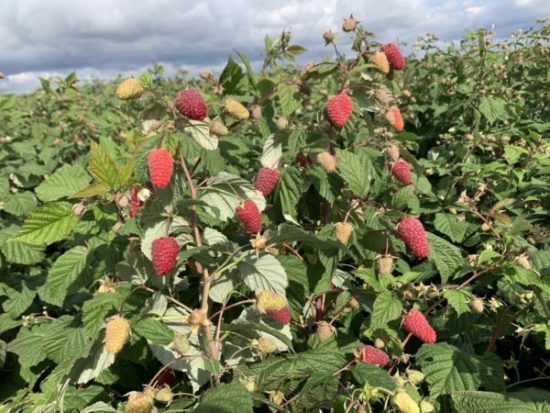
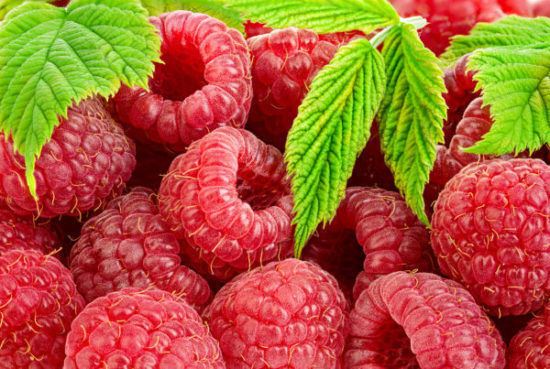
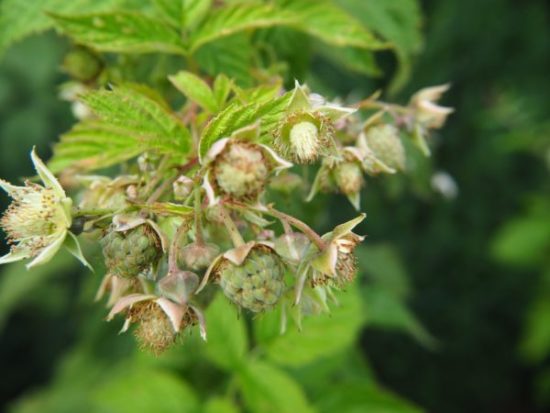
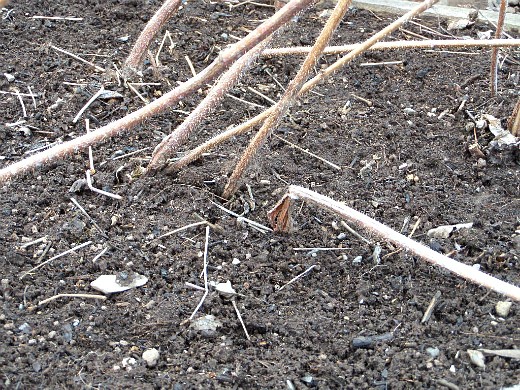
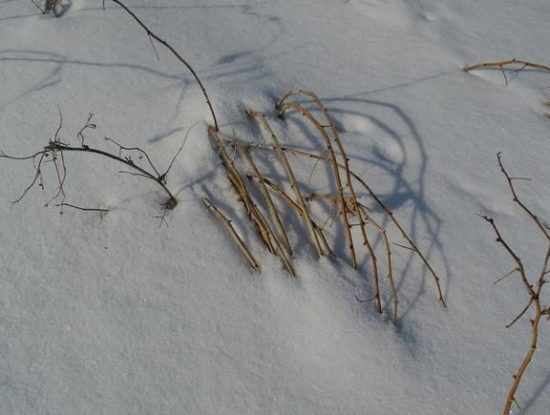
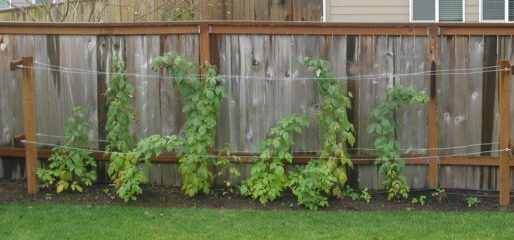
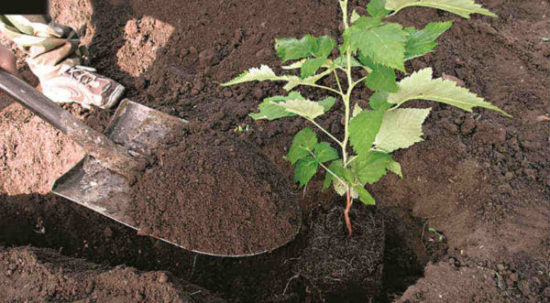
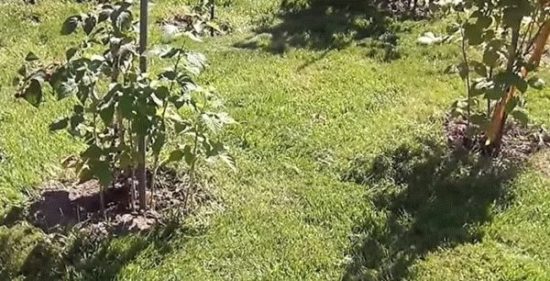
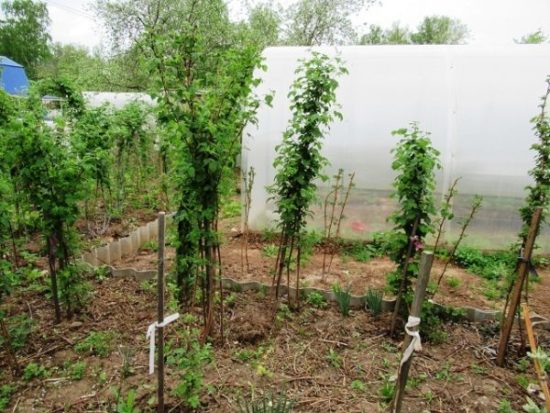
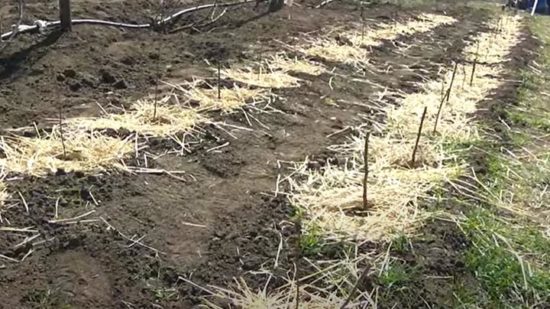
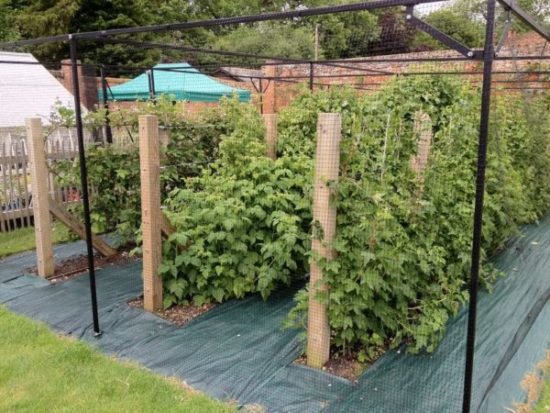
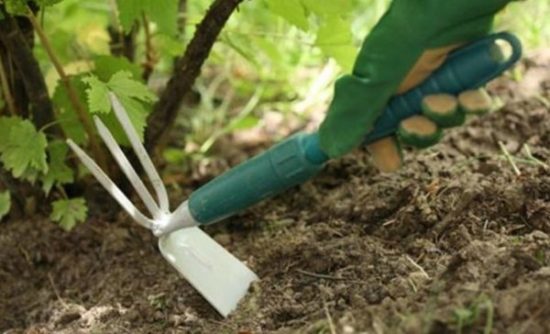
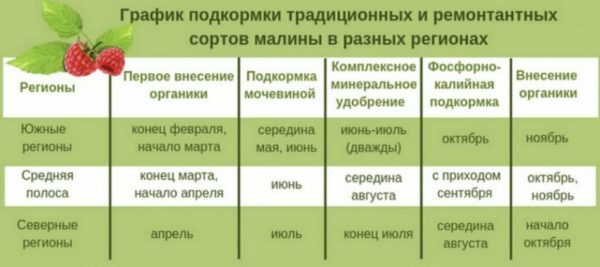
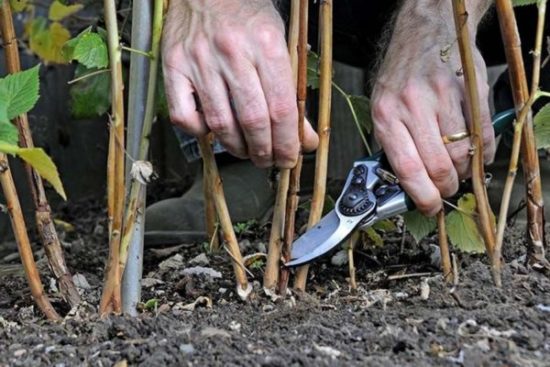
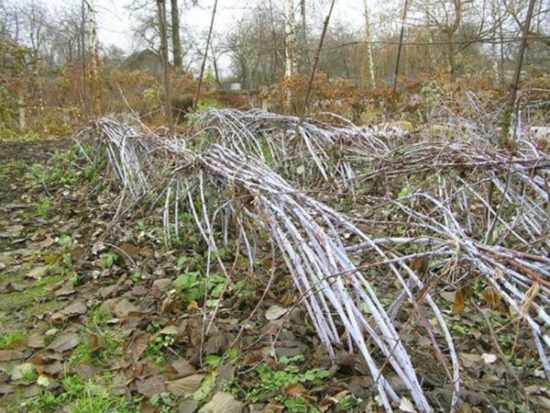
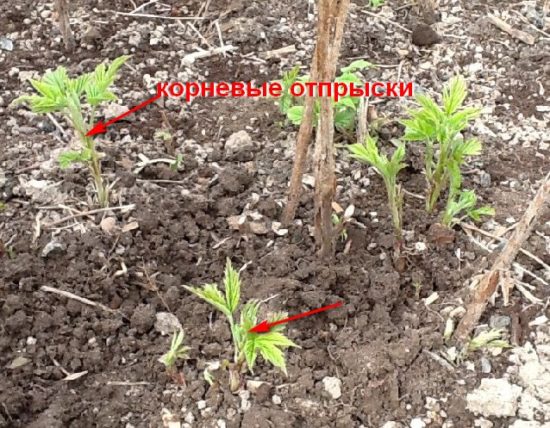
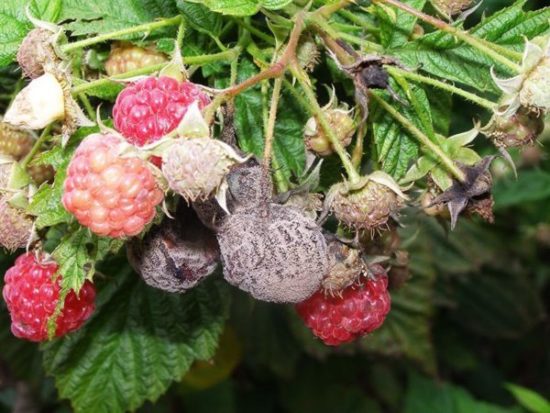

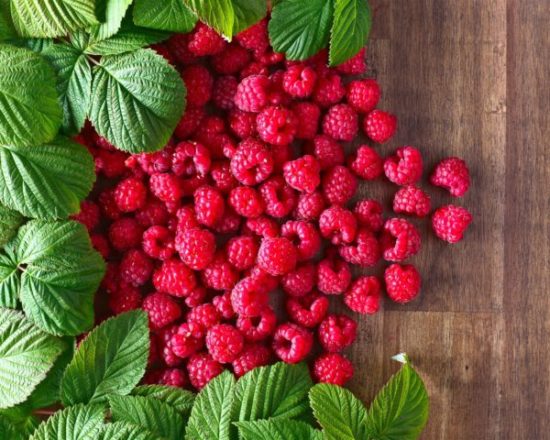
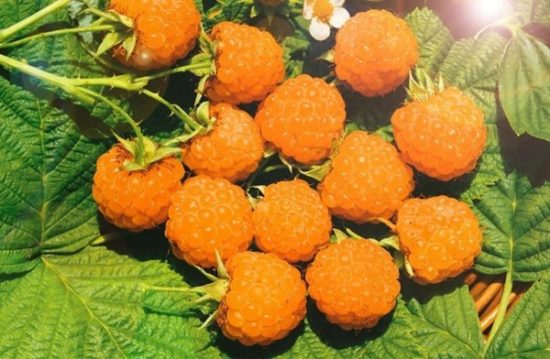
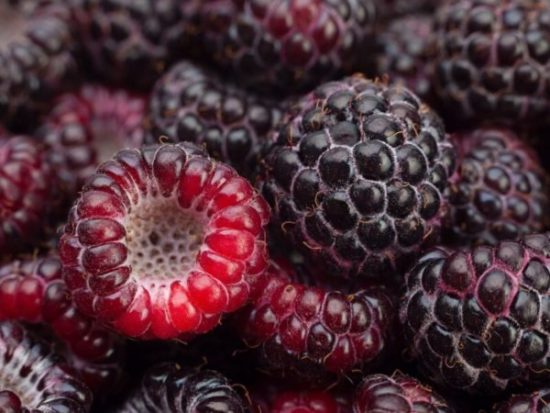


 (3 ratings, average: 3,67 out of 5)
(3 ratings, average: 3,67 out of 5) CUCUMBERS NEVER GET SICK, I'VE BEEN USING ONLY THIS FOR 40 YEARS! I SHARE A SECRET WITH YOU, CUCUMBERS ARE LIKE THE PICTURE!
CUCUMBERS NEVER GET SICK, I'VE BEEN USING ONLY THIS FOR 40 YEARS! I SHARE A SECRET WITH YOU, CUCUMBERS ARE LIKE THE PICTURE! You can dig a bucket of potatoes from each bush. Do you think these are fairy tales? Watch the video
You can dig a bucket of potatoes from each bush. Do you think these are fairy tales? Watch the video
 How our fellow gardeners work in Korea. There is a lot to learn and just fun to watch.
How our fellow gardeners work in Korea. There is a lot to learn and just fun to watch. Eye trainer. The author claims that with daily viewing, vision is restored. They don't charge money for views.
Eye trainer. The author claims that with daily viewing, vision is restored. They don't charge money for views. A 3-ingredient cake recipe in 30 minutes is better than Napoleon. Simple and very tasty.
A 3-ingredient cake recipe in 30 minutes is better than Napoleon. Simple and very tasty. Therapeutic exercises for cervical osteochondrosis. A complete set of exercises.
Therapeutic exercises for cervical osteochondrosis. A complete set of exercises. Which indoor plants match your zodiac sign?
Which indoor plants match your zodiac sign? What about them? Excursion to German dachas.
What about them? Excursion to German dachas.